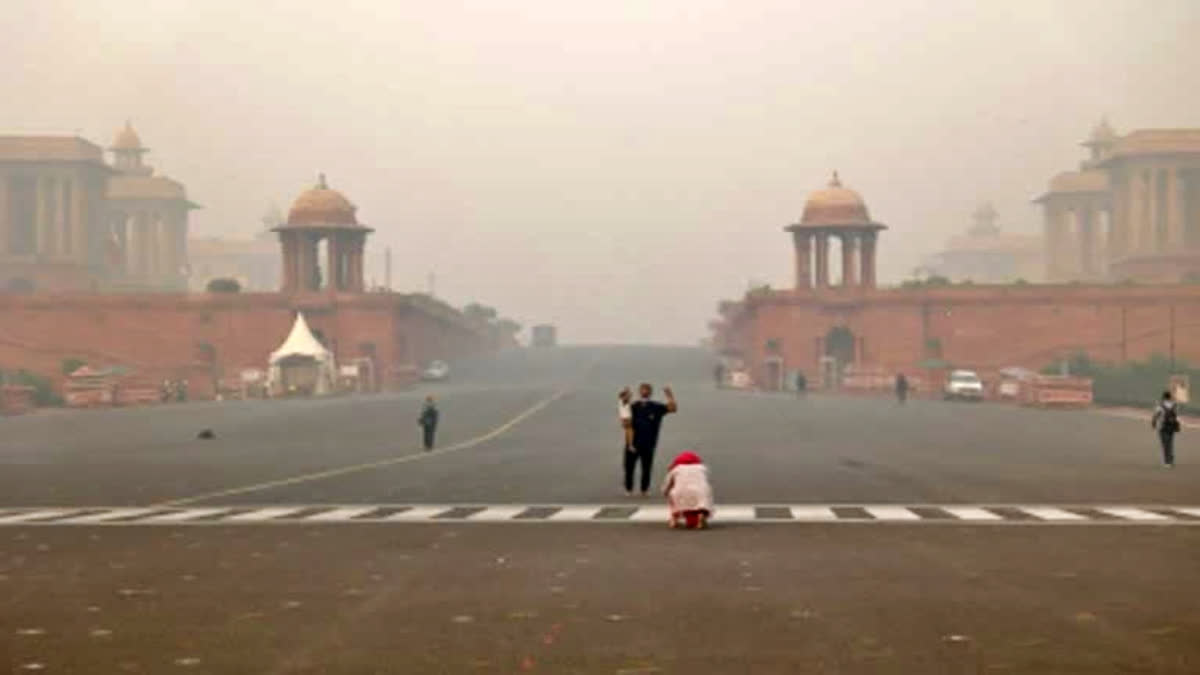New Delhi: Delhi's air quality was recorded in the poor category for the third consecutive day on Wednesday and a major improvement is unlikely over the next few days, according to monitoring agencies. The city's average air quality index (AQI) stood at 238 at 10 am, worsening from 220 at 4pm on Tuesday.
Air quality in city poor, no major relief predicted The average AQI was 196 in neighbouring Ghaziabad, 258 in Faridabad, 176 in Gurugram, 200 in Noida and 248 in Greater Noida. According to the Centre's Air Quality Early Warning System for Delhi, the city's air quality is likely to oscillate between the poor and very poor categories over the next four to five days.
An AQI between zero and 50 is considered good, 51 and 100 satisfactory, 101 and 200 moderate, 201 and 300 poor, 301 and 400 very poor, and 401 and 500 severe. Delhi's air quality had turned very poor on Sunday for the first time since May, mainly due to a drop in temperature and wind speed, which allowed pollutants to accumulate.
Several incidents of firecracker burning were also reported from parts of Delhi on the occasion of Dussehra on Tuesday. In accordance with the practice of the last three years, Delhi had last month announced a comprehensive ban on the manufacture, storage, sale, and use of firecrackers within the capital city.
A public awareness campaign, 'Patakhe Nahi Diye Jalao', will be soon reintroduced to discourage the burning of firecrackers. Unfavourable meteorological conditions and a cocktail of emissions from firecrackers and paddy straw burning, in addition to local sources of pollution, push Delhi-NCR's air quality to hazardous levels around Diwali every year.
The city government had Monday directed all district magistrates to conduct inspections in their areas to ensure strict implementation of all pollution mitigation measures. Delhi Environment Minister Gopal Rai said the government has identified eight more pollution hotspots in addition to the existing 13 in the national capital, and special teams will be deployed there to check pollution sources.
Rai said the government has also decided to use suppressant powder to prevent dust pollution in the city. Dust suppressants could include chemical agents like calcium chloride, magnesium chloride, lignosulfonates, and various polymers. These chemicals work by attracting and binding fine dust particles together, making them too heavy to become airborne.
The minister also said the government will re-launch a campaign to curb vehicular pollution on October 26, a year after Lieutenant Governor V K Saxena put it on hold, questioning its effectiveness. Sources in the city government's environment department said the LG's permission will not be required for the "Red Light On Gaadi Off" campaign this year as the participants will not receive any honorarium, unlike in previous seasons.
A 2019 study conducted by the Central Road Research Institute showed that keeping engines running at traffic signals can increase pollution levels by more than nine per cent. A range of emission inventory and source apportionment studies carried out for Delhi in the past few years suggested that on-road vehicular exhaust emissions account for nine percent to 38 percent of PM2.5 emissions in the capital.
The Commission for Air Quality Management (CAQM), a statutory body responsible for proactively implementing the pollution control plan known as the Graded Response Action Plan (GRAP), had on Saturday directed authorities in the NCR to increase parking fees to discourage private transport and enhance the services of CNG or electric buses and metro trains amid a likely increase in pollution levels.
This action is part of Stage II of GRAP which is implemented when Delhi's AQI is predicted to turn very poor. GRAP categorises actions into four stages: Stage I poor (AQI 201-300); Stage II very poor (AQI 301-400); Stage III severe (AQI 401-450); and Stage IV severe plus (AQI >450).
The Delhi government had last month launched a 15-point action plan to mitigate air pollution in the capital during the winter season, with a strong emphasis on addressing dust pollution, vehicular emissions, and open burning of garbage. (PTI)
